Rather than varnish, there is high voltage "Corona Dope" which is specifically designed for the purpose.
GC Electronics - 10-4702 - Chemicals - Coatings & Paints - Allied Electronics
I know about Corona Dope, but the place I usually buy components from (Mouser) does not ship it to Europe.
ReinoutdV - I built a shielded 4 wire HT umbilical cord for a phono-preamp (300V HT, 6.3V for heaters). The shield is braided tinned coper 95% cover rated at 3A - it connects the preamp housing to the power supply housing, and carries any preamp fault current back to the power supply safety ground. All good, EXCEPT the connectors (1200V bayonet milspec) do not always make clean contact around the circumference, and the I get FM radio, not phono! Can you recommend good screw-down connectors?
Screw-on Connectors
Good for 500VRMS(707DC)
http://www.amphenolconnex.com/media/downloads/5659/tnc.pdf
122108 Amphenol Connex | Mouser
Good for 500VRMS(707DC)
http://www.amphenolconnex.com/media/downloads/5659/tnc.pdf
122108 Amphenol Connex | Mouser
connector suggestion
Good evening Bondini,
Amphenol and Bendix are my preferred brands. These never let me down and are relatively easy to source at Ebay or surplus-/dump-stores.
Examples as pictured. These are exactly the brands i mentioned. The same style is also available from USSR-sources for less money but i don't have first hand experiences with these.
Succes,
Reinout
Good evening Bondini,
Amphenol and Bendix are my preferred brands. These never let me down and are relatively easy to source at Ebay or surplus-/dump-stores.
Examples as pictured. These are exactly the brands i mentioned. The same style is also available from USSR-sources for less money but i don't have first hand experiences with these.
Succes,
Reinout
Attachments
MS series MIL-spec connectors are made by Amphenol, Bendix, Souriau etc - all to the same spec's. The pic to the left are somewhat bulky, in my opinion.......
There are several series and sizes of MS plugs, depending on current draw. I've used them in pin numbers from 2 to 60. A set, cable and chassis, of 10-, - a 6 pin rateda t 7,5A and 600--1000V should be around 30€, or 45$...
There are several series and sizes of MS plugs, depending on current draw. I've used them in pin numbers from 2 to 60. A set, cable and chassis, of 10-, - a 6 pin rateda t 7,5A and 600--1000V should be around 30€, or 45$...
Maybe use one of the PL-259/SO-239 for the b+, and a more standard multi-wire connector for filaments and bias and other lower voltages.
No offence, but that's a horrible idea. The PL-259/SO-239 connectors don't make very good ground contact. The ground is connected by the points on the SO-239 along with the two tabs on the PL-259.
If you go with RF connectors for the power, I strongly recommend using N connectors instead. At least those make good contact with a good ground ring.
PL-259/SO-239:
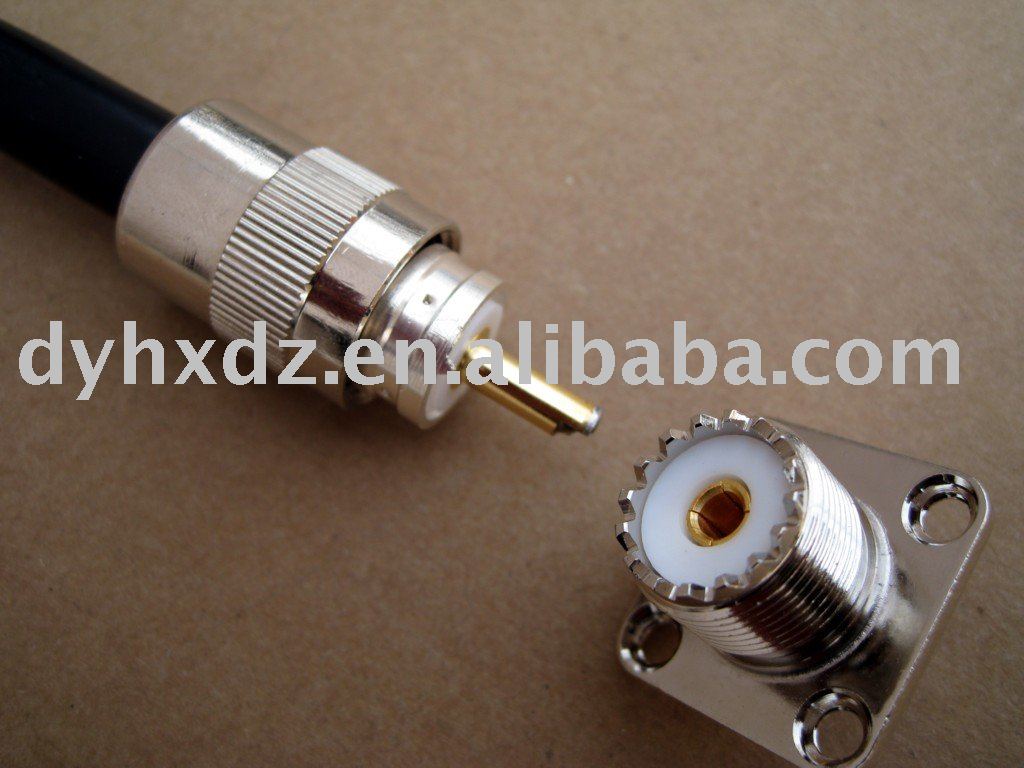
N-connector:
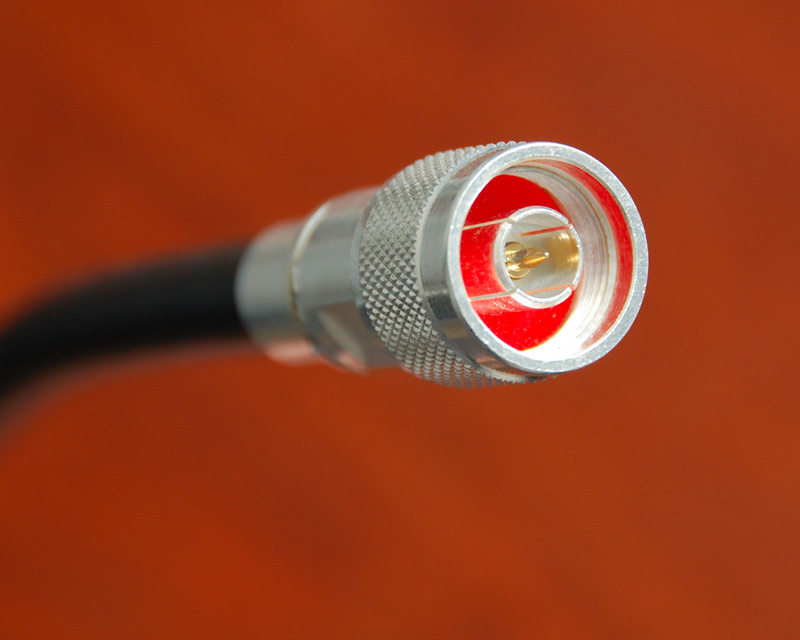
~Tom
Last edited:
I would strongly advise against MHV: It is appropriately rated for that voltage, but does *not* provide sufficient protection against accidentally touching the hot center pin. The insulating shroud is simply too short, despite being longer than in BNC connectors.
If you want high voltage rating *and* user safety in a single pin connector, go for the SHV type. It features a long insulation shroud which protects against touching the center pin. In fact, SHV is the lab standard for single HV lines in almost any physics lab.
Rundmaus
If you want high voltage rating *and* user safety in a single pin connector, go for the SHV type. It features a long insulation shroud which protects against touching the center pin. In fact, SHV is the lab standard for single HV lines in almost any physics lab.
Rundmaus
No offence, but that's a horrible idea. The PL-259/SO-239 connectors don't make very good ground contact. The ground is connected by the points on the SO-239 along with the two tabs on the PL-259.
Oh sorry, I was just repeating the part (cable) someone else recommended a few posts before mine.
My point was only that there was the possibility of using 1 special HV connector, and a more standard multi-wire connector for the lower voltages.
Sorry Fralippo this is total nonsense. Probably he doesn't know the right materials and other tricks to make them work safely at higher voltage and sound correct.My preferred output transformers winder guarantees its up to 800V only.
He says that he'd use different isolating materials to go higher... but sound would suffer so he simply doesn't produce them.
Could someone expert of HV transformers give me suggestions on the matter?
Thanks!
Use Nomex paper for insulation it comes in all sorts of sizes. Simply the best but expensive, possibly another reason why he doesn't use it....
Once the insulation is enough one only needs to figure out a correct and sound layout. End.
Has anyone use Millen connector like this one?
Millen High Voltage Connector Set Red 37001 C D New | eBay
Millen High Voltage Connector Set Red 37001 C D New | eBay
Heh... back again from 2014.
Gotta disagree with Tomchr, the "UHF" connectors do fine as far as ground.
The contact is not between the little tabs, the entire surface of the two connectors are held flush against each other, and the outer shell makes a connection as well. Of course, if you install them without tightening, then you may get a connection that is less than perfect. But given that hundreds of thousands of amateur radio operators use them all the time with RF highvoltage going through them, not much of an issue.
The N connector will work nicely, but it is just a beefed up BNC, and the center pin is anemic by comparision, but I guess at the typical currents involved they will work fine, and may mechanically be a better choice, albeit more expensive.
The Millen connectors? Sure, work fine for HV.
You'll need HV rated wire, not coax for them.
Not the best for taking off and on a lot, but if that's not a consideration they've been around maybe 75 years and have been used in all sorts of applications for HV.
Gotta disagree with Tomchr, the "UHF" connectors do fine as far as ground.
The contact is not between the little tabs, the entire surface of the two connectors are held flush against each other, and the outer shell makes a connection as well. Of course, if you install them without tightening, then you may get a connection that is less than perfect. But given that hundreds of thousands of amateur radio operators use them all the time with RF highvoltage going through them, not much of an issue.
The N connector will work nicely, but it is just a beefed up BNC, and the center pin is anemic by comparision, but I guess at the typical currents involved they will work fine, and may mechanically be a better choice, albeit more expensive.
The Millen connectors? Sure, work fine for HV.
You'll need HV rated wire, not coax for them.
Not the best for taking off and on a lot, but if that's not a consideration they've been around maybe 75 years and have been used in all sorts of applications for HV.
beware, the Millen connector ASSUMES a direct solid chassis ground!!
The disadvantage is that IF the ground between two chassis is disconnected BUT the HV is not, it is possible for the chassis to float to HV potential! Much depends on the details of the layout and grounding, and IF there happens to be a fault or other path to carry HV such that the chassis becomes elevated. The advantage to the type N connector is that the pins are recessed (safer) and IF you use coax you have that ground coming along with the HV cable.
The disadvantage is that IF the ground between two chassis is disconnected BUT the HV is not, it is possible for the chassis to float to HV potential! Much depends on the details of the layout and grounding, and IF there happens to be a fault or other path to carry HV such that the chassis becomes elevated. The advantage to the type N connector is that the pins are recessed (safer) and IF you use coax you have that ground coming along with the HV cable.
There should be Amphenol connectors that can accommodate what you're looking for. They will also have some with high current pins so you can buss the 10V in for your 845 filaments, which requires a bit more than the standard weeny pins on some of these plugs/connectors.
As has been mentioned, you want the female jack on the PSU, which puts a female cable end plugging into your amp. This will protect you if the cable comes unplugged and someone grabs it.
If you have extra pins (having spent a lot of time in the Amphenol catalog, you'll find that a lot of these connectors have tons of pins), then you can short two together on the amplifier end. The simple way to use this protection is to buss your line voltage through here, so that unplugging the cord at either end disrupts your incoming AC voltage. Another possible setup you could use would be to have that shorted connection between whatever rectifier you're using and the first filter capacitor.
If I had to do this, I would put just a plate transformer into the amplifier chassis, along with the HV supply, then pack the two 10V supplies, driver heater transformer, and driver B+ transformer/power supply in an external chassis. All this crap weighs a ton on its own.
As has been mentioned, you want the female jack on the PSU, which puts a female cable end plugging into your amp. This will protect you if the cable comes unplugged and someone grabs it.
If you have extra pins (having spent a lot of time in the Amphenol catalog, you'll find that a lot of these connectors have tons of pins), then you can short two together on the amplifier end. The simple way to use this protection is to buss your line voltage through here, so that unplugging the cord at either end disrupts your incoming AC voltage. Another possible setup you could use would be to have that shorted connection between whatever rectifier you're using and the first filter capacitor.
If I had to do this, I would put just a plate transformer into the amplifier chassis, along with the HV supply, then pack the two 10V supplies, driver heater transformer, and driver B+ transformer/power supply in an external chassis. All this crap weighs a ton on its own.
for heathers professional speackon neutrick its cheap and perfect.
i also use ceramic tube sockets and powercon retour for HV, 1kV its over specifications but no problems, 10mm between poles !
afther all this amps are not for family boys ang girl feasts , i see people spend 1KUSD for HV connectors and 833 exposed to all
i also use ceramic tube sockets and powercon retour for HV, 1kV its over specifications but no problems, 10mm between poles !
afther all this amps are not for family boys ang girl feasts , i see people spend 1KUSD for HV connectors and 833 exposed to all
Attachments
- Status
- This old topic is closed. If you want to reopen this topic, contact a moderator using the "Report Post" button.
- Home
- Amplifiers
- Tubes / Valves
- 1KV umbilical cords.... and other HV issues
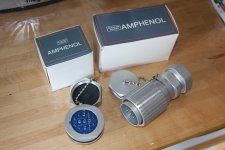
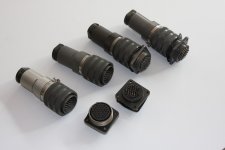
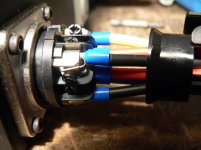
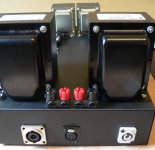
![powercon-plug-neutrik-nac3fcb-[2]-478-p[ekm]296x112[ekm].jpg](/community/data/attachments/512/512071-f6df5f7ee1fc81b4ab9ea609662e5ded.jpg)